Miracle Mile subway open house
July 12, 2010
 Metro has finished holding a lengthy series of community meetings on the Westside Subway extension project. But that doesn’t mean it’s too late to get an early sense of what the coming of the subway could mean to your life and commute. People who work in the Miracle Mile area are invited to an open house Wednesday, July 14, at the LACMA-Brown Auditorium, 5905 Wilshire Boulevard, to learn more about the project.
Metro has finished holding a lengthy series of community meetings on the Westside Subway extension project. But that doesn’t mean it’s too late to get an early sense of what the coming of the subway could mean to your life and commute. People who work in the Miracle Mile area are invited to an open house Wednesday, July 14, at the LACMA-Brown Auditorium, 5905 Wilshire Boulevard, to learn more about the project.
The program runs from 11 a.m. to 2 p.m. A series of presentations will be offered during the open house. Bring a brown bag lunch to supplement the light refreshments being served. More information is here.
A draft environmental impact report on the Westside subway extension—one of a dozen projects aiming for fast-track completion under the 30/10 Initiative—will be released later this summer.
Posted 7/12/10
Shake a leg on quake preparation
July 9, 2010
If you still haven’t created that earthquake preparedness kit, consider this week’s 5.4 quake in Borrego Springs a rolling reminder. The next one might not be so gentle. To help you get started, the county Department of Public Health offers a convenient checklist to download, with recommendations on what to have handy when an emergency hits. (Don’t forget the pet food.) You might also want to click around the Southern California Earthquake Data Center’s fault map and other resources.
Posted 7/09/10
Zev hosts “Government Day” at Panorama Mall
July 8, 2010
Supervisor Zev Yaroslavsky once again hosts Panorama Mall’s 30th Annual Government Day, sponsored for the 15th year by his office. The event will take place on Saturday, July 17, 2010 from 10:00 a.m. – 2:00 p.m. at the Mall, located at 8401 Van Nuys Boulevard, at the corner of Roscoe and Van Nuys Boulevards in Panorama City.
More than 40 federal, state, county and city agencies will present exhibits and distribute literature about their various programs. Among the participants:
- Los Angeles County Department of Health Services
- Los Angeles County Department of Public Social Services (enrollment for children eligible for Medi-Cal and Healthy Families programs)
- Los Angeles County Registrar-Recorder/County Clerk
- Los Angeles County Treasurer-Tax Collector
- Los Angeles County Department of Human Resources
- Los Angeles City Department of Building and Safety
- Los Angeles Valley and Mission Community Colleges
- California State Department of Motor Vehicles
- California State Employment Development Department
- U.S. Social Security Administration
For further information, use this interactive map or contact Panorama Mall directly during business hours at (818) 894-9258.
Posted 7/09/10
“Dr. Cerberus” will see you now (or vice versa)
July 8, 2010
 L.A. Theatre Works, the renowned audio dramatic troupe presenting both revivals and newly commissioned works for public radio broadcast and other listening formats, concludes its 2009-10 “The Play’s the Thing” season this coming week with “Dr. Cerberus.” It’s a radio adaptation of an original production by TV writer and playwright Roberto Aguirre-Sacasa, billed as “a coming-of-age, coming-out cocktail with a twist of terror.”
L.A. Theatre Works, the renowned audio dramatic troupe presenting both revivals and newly commissioned works for public radio broadcast and other listening formats, concludes its 2009-10 “The Play’s the Thing” season this coming week with “Dr. Cerberus.” It’s a radio adaptation of an original production by TV writer and playwright Roberto Aguirre-Sacasa, billed as “a coming-of-age, coming-out cocktail with a twist of terror.”
What struggling 13-year-old boy hasn’t been tortured by an annoying little brother, obtuse parents, and a hopeless social life? Many boomer kids, as the original TV generation, found escape or relief from adolescent angst in cheesy horror-movie programs that might have featured the local weatherman or the station manager’s girlfriend in full monster get-up, tossing off howling bad puns about their grade-Z horror and sci-fi movies.
“Dr. Cerberus” conjures up such a character (pictured here from its world stage premiere at the South Coast Repertory earlier this spring), and tells the story of a young boy who becomes convinced that only a guest-shot with the TV host can redeem and transform his unhappy existence.
“Doctor Cerberus” runs Wednesday, July 14 through Sunday, July 18. Weekday evening curtain is 8 pm; Saturday matinee is 2:30 pm and Sunday matinee is 4:00 pm. Purchase your tickets on-line, and be sure to allow time for the dinner buffet at Zeidler’s Cafe beforehand; menu here, but reserve first at (310) 440-4575. And parking is free.
The performance is being held in the Magnin Auditorium of the Skirball Cultural Center,
2701 N. Sepulveda Blvd., Los Angeles.
Ford begins free community concert series
July 8, 2010
The County’s John Anson Ford Amphitheatre kicks off its Summer 2010 free community concert series in our district this weekend with the Latin and Brazilian beats of Brazilando. They can be heard from 5-7 p.m. Saturday in the Los Angeles County Museum of Art‘s Outdoor Amphitheatre, located in the park between LACMA’s Hammer Gallery and 6th Street (Here’s a map.)
The Ford will present eight concerts in the Third District, featuring a variety of musical genres from Latin jazz and mariachi to R&B, roots reggae and soul. The concerts run from July through October. The county previously had supported the series through general funds but, because of budget cuts, county supervisors now are using their individual office funds to underwrite concerts in each of their districts.
See the full schedule of Third District concerts and start making your plans now.
The concerts are presented cooperatively with the L.A. County Arts Commission as part of the commission’s Free Concerts in Public Sites program.
Posted 7/8/10
Money for arts, shorter holiday show
July 8, 2010
If you’re already sick of summer and have started counting the days till L.A. County’s free Holiday Celebration, we have some news for you: This year’s musical extravaganza will be shaving three hours off the usual six-hour running time.
In other words, a little less “Nicholas Nickleby,” a little more “Muppet Christmas Carol.”
The show will go on—albeit in reduced form—for other arts programs, too, thanks to an infusion of $731,000 from the Board of Supervisors on Tuesday. The board acted to restore funds previously cut from the Arts Commission budget. In addition to providing funding toward the Holiday Celebration, an array of local arts institutions will see their county grants cut only 7%, instead of 13%, because of the additional funds, said Arts Commission Executive Director Laura Zucker. And a chunk of the money is going toward summer arts internships, allowing the program to continue next summer on the same limited basis as this year.
“It’s good news,” Zucker said, “but I don’t want to give the impression that the arts are escaping their fair share of reductions…This [funding infusion] mitigated steeper cuts.”
Zucker noted that 90 of the 166 organizations receiving grants will be using the money to directly support jobs.
“Anything that we can do to soften the blow to these nonprofits is important,” she said.
As for the Holiday Celebration, the shorter running time means that only 22 or 23 performing groups—instead of last year’s 45—will be able to take the stage at the Dorothy Chandler Pavilion. And the show will be televised only locally, not nationally. The production, founded 50 years ago by the late County Supervisor Kenneth Hahn, traditionally showcases a wide variety of musical and dance groups, from barbershop quartets to klezmer and mariachi performers.
The cost to put it on last year was $979,000; $829,000 is budgeted for this year’s production. Zucker noted that there’s a precedent for a trimmed-down Holiday Celebration; in the early ’90s, tight finances also forced shorter show times.
And Zucker said she still has hopes of putting on a six-hour, nationally televised show if she can find a partner, such as Univision, to cover the $150,000 shortfall that remains, even after the supervisors’ action.
The supervisors voted 3-2 to tap county reserves to provide the one-time funding. The action was proposed by Supervisors Michael D. Antonovich and Mark Ridley-Thomas as an amendment to a measure authorizing $3.8 million in annual arts grants. Supervisor Zev Yaroslavsky joined Antonovich and Ridley-Thomas in voting for the funding, while Supervisors Gloria Molina and Don Knabe voted against it. Knabe said he supported additional funds for the Holiday Celebration and the internships but did not want to provide extra money for the arts organization grants. Molina said that in this economic climate it was more important to find money to reverse library cutbacks.
Posted 7/8/10
Ancient mammals invade museum
July 8, 2010
Say goodbye to boring field trips and uninspired fossils. Say hello to a brand new cast of prehistoric characters that includes a walking whale, a bone-crushing dog and a “thunder beast” that looks like a cross between a dinosaur and a rhino.
They may be extinct but they sure know how to bring an exhibition to life.
They’re among the stars of the groundbreaking “Age of Mammals” exhibition at the Natural History Museum, which opens July 11 to tell a 65-million year story of mammals—from the fall of dinosaurs to the present day.
The animals have an undeniable cool factor, but the explanations and interactive displays are just as interesting, since they connect the animals to the deeper story of mammal evolution as clearly as, well, your thigh bone’s connected to your hip bone.
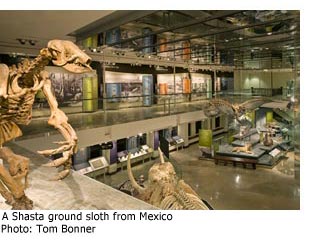 “We’re trying to get to the essence of what a natural history museum should be for a 21st century audience,” says museum president and director Jane Pisano.
“We’re trying to get to the essence of what a natural history museum should be for a 21st century audience,” says museum president and director Jane Pisano.
“Age of Mammals” is the first major permanent exhibition to open as part of an ongoing rebuilding and transformation project leading up to its Centennial in 2013 called “NMH Next.” The project started with the completion last year of a state of the art restoration of the museum’s historic 1913 Building that is finally on display with the opening of the new space. (Read more about the renovation and future exhibits here.)
The new mammals exhibit fills the two-story north wing of the restored building, but the show is housed in a fully modern space lit by a giant skylight and broad rows of windows. Video loops and interactive touch screen displays animate the exhibit.
Virtually all mammals are warm-blooded vertebrates, with hair, who feed their young with milk. But as this show makes clear, the similarities can end there. Here are some of the show’s stars:
- The Simi Valley Mastodon, a 50,000 year old skeleton found in 2001 at a construction dig near the Ronald Reagan Freeway. Nearly nine feet high, it’s the biggest fossil skeleton in the show.
- A giant Paleoparadoxiid, with a head like a hippo and bizarre paddle-like feet, “looks like nothing you’ve ever seen before,” says John Harris, the mammal show’s chief curator and director of the county’s Page Museum. No wonder its name means “ancient mystery.”
- The Brontothere, or “thunder beast,” that looks like a dinosaur-rhino mix and sprouts a large Y-shaped horn on its snout.
- A 52 million-year-old “walking whale” from Pakistan that stands (literally, on four legs) as living proof that whales’ ancestors started on land. The family resemblance isn’t obvious. This denizen of lakes and rivers “looks a bit like an overgrown opossum,” Harris admits.
- The 8 million-year old “bone crushing dog” from Kansas that stalked ancient horses as a member of the largest dog family ever discovered.
Beyond the animals, the exhibit is important for telling the sweeping story of mammal evolution. “What’s unique about this exhibit is that we explain why it happened,” Harris says.
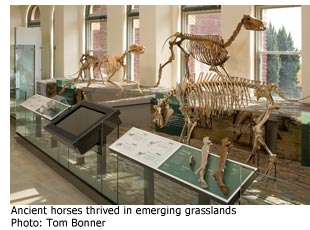 Mammals adapted to global climate changes brought on over millions of years by factors that included the tectonic shift of continents. Or, as a video loop near the mastodon explains: “Continents move, climates change, mammals evolve.”
Mammals adapted to global climate changes brought on over millions of years by factors that included the tectonic shift of continents. Or, as a video loop near the mastodon explains: “Continents move, climates change, mammals evolve.”
An exhibit featuring several ancient horses highlights the rise of swift running grazing animals as warming climates changed forests to grasslands. A display of human evolution shows that grass savannahs were crucial to our development, too.
The displays are full of eye-catching visuals. A pair of cheetahs, a fossil skeleton and a modern stuffed specimen sprint side by side, to show inner and outer views of locomotion. Overhead hang marine fossils including a baby sperm whale, clad in wire mesh to “flesh out” the creatures without obscuring their skeletons.
The exhibition stresses local mammals partly because the collection is rich with them, but also to intrigue visitors who will respond to local sites. as shown in panels on what Los Angeles, Ventura County and the Mojave were like in pre-historic times.
“This is an exhibit for Los Angeles, for Angelenos,” says director of exhibition production Simon Adlam.
Displays on the second floor explain the ideas and techniques that let modern scientists study and understand the ancient world. Near the Paleoparadoxiid, video screens showcase the specimen’s discovery, the excavation and laboratory study.
The exhibit ends with a reminder that humans themselves are now changing the planet’s climate with a threatened polar bear staring from a display case.
“The global warming message is clear, simple and up to date,” says John Long, vice president of research and collections. (A broader climate appeal on the museum’s website can be found here.)
Posted 7/8/2010
New turf for the sheriff’s watchdog
July 7, 2010
Veteran civil rights lawyer Michael Gennaco has focused for nearly a decade on one job: keeping an eye on the Los Angeles Sheriff’s Department.
As chief attorney of the respected Office of Independent Review, Gennaco has built a model oversight unit, investigating everything from on-duty shootings to off-duty drunkenness. Although not beloved by the rank-and-file, the unit has the support of Sheriff Lee Baca and has been credited with improving the department’s training and discipline.
Now Gennaco finds himself on a new mission, one that has put him and his team front-and-center in one of Los Angeles County’s most vexing and embarrassing controversies. The Office of Independent Review, or OIR, has been recruited by the Board of Supervisors to help restore accountability and integrity to another one of the county’s criminal justice agencies—the scandal-plagued Probation Department.
It’s a new challenge—“a whole new world,” Gennaco says—but also the natural extension of his work monitoring the Sheriff’s Department and his earlier career as a widely praised federal prosecutor specializing in law enforcement misconduct and civil rights violations.
“I have a world vision in which police officers obey the law, a vision that is supported in most cases,” Gennaco says. “But there are times when they abuse their power. The victims of police misconduct don’t have power and authority and the ability to get redress. They’re not the people in Malibu.”
The mandate
In the weeks ahead, Gennaco’s team of six lawyers will be expanded to eight. He’ll send a pair of them to the Probation Department with orders to improve the speed, quality and effectiveness of internal discipline. The OIR lawyers will work hand-in-hand with the agency’s new chief, Donald Blevins, who has vowed to crack down on misbehavior and rebuild the department’s management ranks.
Although the details of the arrangement are still being worked out, Gennaco says he believes that “the expertise we have from the Sheriff’s Department will transfer over effectively.” And, the supervisors hope, quickly.
In recent weeks, the reputation of the 6,000-person department has come under withering assault amid disclosures of institutional failings and individual misconduct.
Staffers have been accused of, among other things, using department credit cards to buy electronic goods and of allowing juvenile charges to engage in video-taped brawls in probation camp classrooms. The department’s managers, meanwhile, have drawn the ire of the Board of Supervisors for being unable to fully account for $79 million that had been allocated to comply with federal mandates to improve conditions in the department’s network of juvenile camps and halls.
As county Chief Executive Officer William T Fujioka put it at a recent board meeting: “The depth of the problems in this department are shocking.”
By then, Gennaco and his team of OIR lawyers had thrown their own fuel on the fire. In a report requested by the supervisors and released last month, OIR disclosed that breakdowns in the Probation Department’s internal affairs operation had allowed dozens of employees accused of misconduct—some of it serious—to escape discipline because the investigations ran too long.
The 60-page report concluded by calling for “the establishment of a permanent independent oversight group”—a job that would promptly be added to OIR’s portfolio.
Gennaco says he’s optimistic change will come. He says the department offered “no resistance” while his team spent three months assessing the internal affairs operation and that the agency’s brass already has adopted some of his team’s 34 recommendations.
Asked whether the rank-and-file might resist his efforts, given the insular nature of law enforcement agencies, Gennaco said simply: “I don’t know.” But he added that swift, accurate investigations are in everyone’s interest, including employees who could be exonerated of wrongdoing.
On a personal level, Gennaco says, he’s “more energized than worried” about the high expectations that have been placed on him because he’s a true believer in the mission that’s been entrusted to him.
Righting wrongs
Raised in a multi-ethnic household, the son of an Italian-American dad and a Latina mom, Gennaco says his interest in civil rights started young. Two of his early heroes were Robert F. Kennedy and Thurgood Marshall. After graduating from Dartmouth College, he attended Stanford University law school and clerked for U.S. Circuit Judge Thomas Tang, the first Chinese-American on the federal bench.
In 1984, Tang encouraged an uncertain Gennaco to join the Department of Justice’s Civil Rights Division, despite concerns that the unit’s work ranked low on the Reagan agenda. “Judge Tang told me if there’s any time when they need good people, it’s now,” Gennaco recalls.
From his post in Washington, Gennaco prosecuted civil rights cases across 20 states, particularly in the South, and began to hone his skills on police misconduct cases. One of those cases gave him his first taste of police culture in Los Angeles when, in 1992, he successfully prosecuted a white LAPD officer assigned to the San Fernando Valley who beat a Latino teenager so severely with a baton that he sustained permanent brain injuries.
In 1994, Gennaco joined the United States Attorney’s Office in Los Angeles, where he established its first civil-rights unit and was credited with expanding the number of investigations and prosecutions of police misconduct and hate crimes. Among his most high profile cases was the prosecution of neo-Nazi Buford O. Furrow Jr., who opened fire at a Jewish day care center in the San Fernando Valley, wounding five. Furrow later shot and killed a Filipino postman.
In 2001, with the LAPD embroiled in a scandal over rogue cops selling drugs and covering up unprovoked shootings, Sheriff Baca surprised the national law enforcement community by calling for the creation of a civilian oversight unit that the sheriff hoped would provide credibility to the department’s internal investigations.
For Gennaco, the timing was perfect. After 16 years of prosecuting individual cops, he was frustrated. He had come to believe that law enforcement agencies effectively bred large-scale misconduct by failing to stamp out small-scale misbehavior early.
“When this [OIR] opportunity popped up, I thought ‘Here’s a chance’” to attack the root of the problem at one of the nation’s largest law enforcement agencies. Gennaco applied for the job and was unanimously picked by the Board of Supervisors, he says, from among 200 candidates.
Since then, Gennaco has earned a reputation as a steady and determined steward of OIR. The unit has produced dozens of reports across a wide array of issues that focus not only on the conduct of individual deputies but also on the practices and policies of the institution itself.
One, for example, led to changes in weapons training after OIR examined a high number of shootings in which deputies were firing multiple rounds. Another, more recently, led to changes in hiring standards, which OIR concluded had been loosened in a rush to increase the department’s ranks and that had resulted in the hiring of recruits with questionable backgrounds. Yet another OIR effort helped create better training for deputies assigned to the jails so they could reduce the number of suicides and homicides among inmates.
Asked for OIR’s biggest success, however, Gennaco had one word—transparency.
“Before we got here, the public had almost no information coming from the department about what kind of conduct was being alleged,” says Gennaco, who lives in Hermosa Beach with his wife of 18 months.
“There are people [in the Sheriff’s Department] who chafe a little whenever we come out with a report,” he says. “But we have to be critical of the department when we have reasons…We have a responsibility to shine a light and that’s uncomfortable.”
Perhaps the most important lesson he’s learned over the years is that civilian oversight, to be effective, must be sustained over time.
“It’s not as if you can fix the department and just go away,” he says—a conviction the Probation Department is about to experience up close.
Posted 7/7/2010
Task force on raves and Ecstasy created
July 6, 2010
The Los Angeles County Board of Supervisors on Tuesday ordered the creation of a multi-agency task force to attack what experts warn is a growing threat to the public health—the potentially deadly relationship between drugs and raves.
The board, voting on a motion by Supervisors Zev Yaroslavsky and Don Knabe, directed the departments of Health Services and Public Health to assemble a team that would recommend ways to make these huge all-night dance events safer and to educate young people and their parents about the dangers of Ecstasy, the so-called “party” drug that is widely known to fuel the raves.
“They need to know what the risks are and what the stakes are,” said Yaroslavsky, who last week called for a moratorium on raves at the Los Angeles Memorial Coliseum Commission, where a recent two-day event led to more than 120 people being rushed to emergency rooms, most for drug-related causes, including a 15-year-old girl who died from an apparent overdose. A special meeting of the Coliseum Commission, of which Yaroslavsky is a member, is scheduled for July 16.
Outside the meeting, Yaroslavsky emphasized that the mission of the new task force would not be limited to a single event but rather to addressing larger public health implications. “It’s about the whole issue,” he said, “about the epidemic of Ecstasy that we have in our society.”
The new task force would bring together representatives from hospitals, law enforcement agencies, local cities, community health providers and the concert promotion industry—a request made by a representative of Insomniac, Inc., which organized the Electric Daisy Carnival at the Coliseum and has remained largely silent about the chaos at the event.
“We hope that the task force, with input from a broad range of the community and stakeholders, including representatives from the musical events industry, will recreate responsible and reasonable recommendations which can be implemented for all musical events in the County,” Insomniac spokesman Simon Rust Lamb. Questioned after his testimony, Lamb and Insomniac’s public relations representative refused further comment.
Also appearing before the supervisors was the county’s public health director, Dr. Jonathan E. Fielding, who said he welcomed the opportunity to lead an effort aimed at tackling Ecstasy abuse at raves, which he called “a significant public health problem.”
Fielding said it is crucial that the public become educated about the unique and growing dangers Ecstasy and its use at raves, whether the events are held in public facilities like the Coliseum or in privately owned warehouses.
He said Ecstasy—methamphetamine combined with psychoactive drugs—can create severe strains on the body, including high blood pressure, elevated body temperature, a rapid heart rate and dehydration. He said that some users become so thirsty that they drink too much water, dangerously lowering their sodium levels, sometimes to fatal levels. He said that warning signs of excessive intoxication include vomiting, headaches, confusion and agitation.
In the early part of the decade, Fielding said, Ecstasy use declined but has started to climb again in recent years. Of drugs that are abused, he said, Ecstasy is “relatively small but increasingly consequential.”
Fielding said the task force might consider suggesting a number of safety measures to decrease Ecstasy health risks at raves, including having more breaks in the music to reduce the activity level and providing sports drinks that will not perilously lower sodium levels. Fielding also suggested that attendees never go alone so they have someone to help them should they fall ill.
As for the parents of younger teens, he offered this advice outside the hearing room: “I would tell them that they should not let their children go to raves. It’s not a place for kids.”
Posted 7/6/10





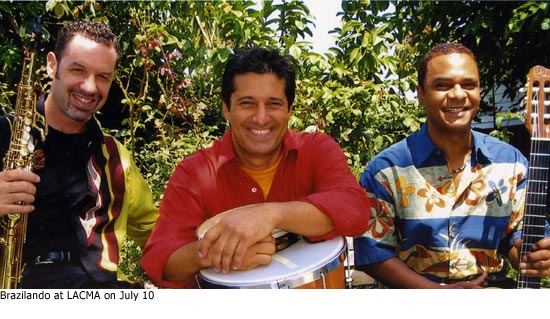
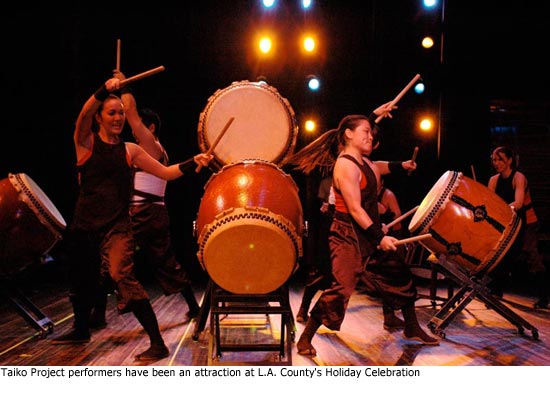
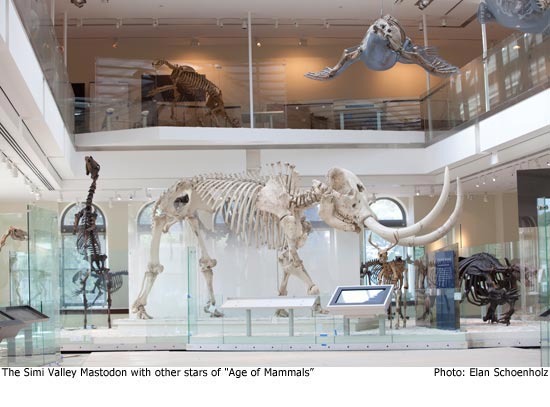

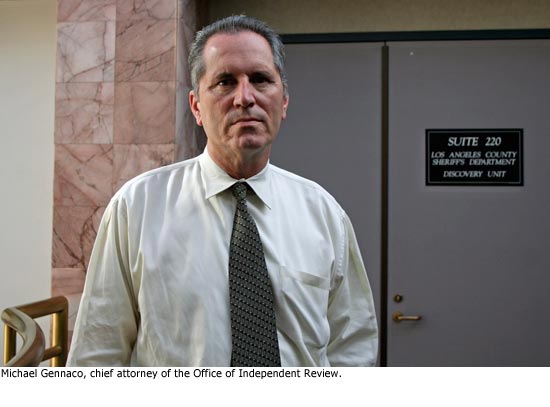






 Check for the latest closure information
Check for the latest closure information








